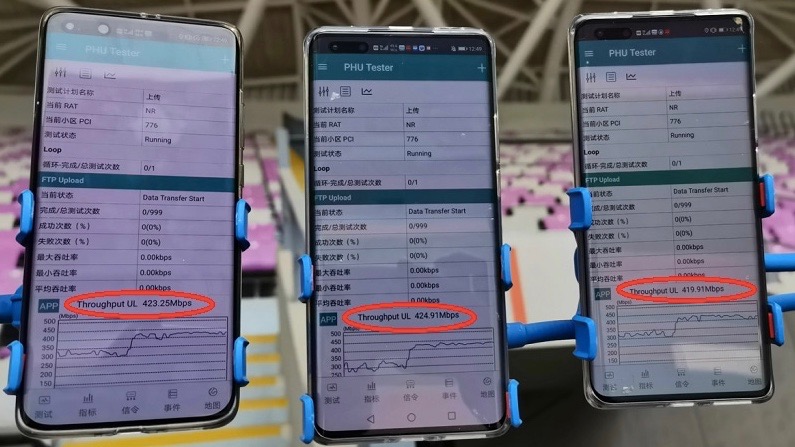Pilot 5G network set to supercharge the Smart 2022 Asian Games
5G indoor distributed Massive MIMO doubled network capacity in the Hangzhou Olympic Sports Center during testing

China Mobile Zhejiang has verified a pilot 5G network in the 80,000-seat Hangzhou Olympic Sports Center, an iconic lotus-petal modelled construction, where the opening and closing ceremonies of the 2022 Asian Games are expected to take place. China Mobile, the official partner for communication services at this event, has chosen Huawei's products and solutions and utilised 2.6 GHz and 4.9 GHz bands to provide 5G coverage in enclosed ultra-dense areas. 5G indoor distributed Massive MIMO proved to be an outstanding highlight of the network.
5G user behaviour simulation
The verification test saw more than 400 5G devices used to perform stress tests with multiple networking solutions involving intra-frequency, staggered-frequency, inter-frequency, and distributed massive MIMO. During the testing, the cells were under extreme capacity levels and 5G user behaviour was also simulated to assess the performance of capacity increase, interference mitigation, and network redundancy.
The test results look very good indeed for network assurance in the smart stadiums for the 2022 Asia Games, showing that the uplink capacity was 50% greater than that obtained with cell splitting and the downlink and uplink interference is efficiently curbed. This high level of performance, made possible by 5G technology, is needed to fulfil the huge service requirements for messaging, Internet access, video transfer, and broadcasting with good user experience.
2.6 GHz + 4.9 GHz dual-band networking
China Mobile Zhejiang adopted 2.6 GHz + 4.9 GHz dual-band networking for the project. The 4.9 GHz band was used to deploy the capacity layer on which Huawei's indoor distributed Massive MIMO was deployed and 2:3 slot assignment was configured. This combination enabled a single cell to provide an uplink rate of 1.2 Gbps. In addition, 16x16 ultra-narrow precise beamforming was implemented by leveraging the high-performance antennas to efficiently isolate interference. Tests in the grandstand areas on both floors 2 and 3 of the stadium showed that indoor distributed Massive MIMO could eliminate interference between cells, helping to increase the uplink capacity by 50% over 4T4R cells.
Indoor distributed Massive MIMO
Indoor distributed Massive MIMO will be the ideal option for large venues with a huge number of guests using 5G phones and looking for a smarter spectating experience. China Mobile are looking to Indoor distributed Massive MIMO to play a crucial role in making the Hangzhou Olympic Sports Center stand out as a benchmark for smart stadiums across China and beyond.
“Indoor distributed Massive MIMO opens up a new direction for exploring just how big indoor 5G networks can evolve.”
Huawei.
“Indoor distributed Massive MIMO opens up a new direction for exploring just how big indoor 5G networks can evolve. Incorporating the leading technologies of outdoor 5G Massive MIMO into indoor networks, distributed Massive MIMO provides indoor networks with joint beamforming and multi-user MIMO (MU-MIMO) to enhance both the 5G network capacity and user experience. It eliminates the co-channel interference to improve signal quality on multi-cell networks, providing a consistent high-speed, high-quality experience in most areas with 5G coverage,” said Huawei in a press statement.
Get up to speed with 5G, and discover the latest deals, news, and insight!
- Why 5G small cells are vital for mmWave 5G
- Get updates on the hottest 5G stocks
- We reveal the latest 5G use cases
- Discover the truth behind 5G dangers
- 5G towers: everything you need to know
Rachael is a British journalist with 17 years experience in the publishing industry. Since launching www.digitalcameraworld.com, she’s been freelancing, and working for some of the world’s best-loved websites and magazines including T3.com and TechRadar.com and has also had a book, iPad for Photographers, published. A regular contributor at 5Gradar, Rachael is following the 5G market closely. Find out more at www.rachaelsharpe.com

